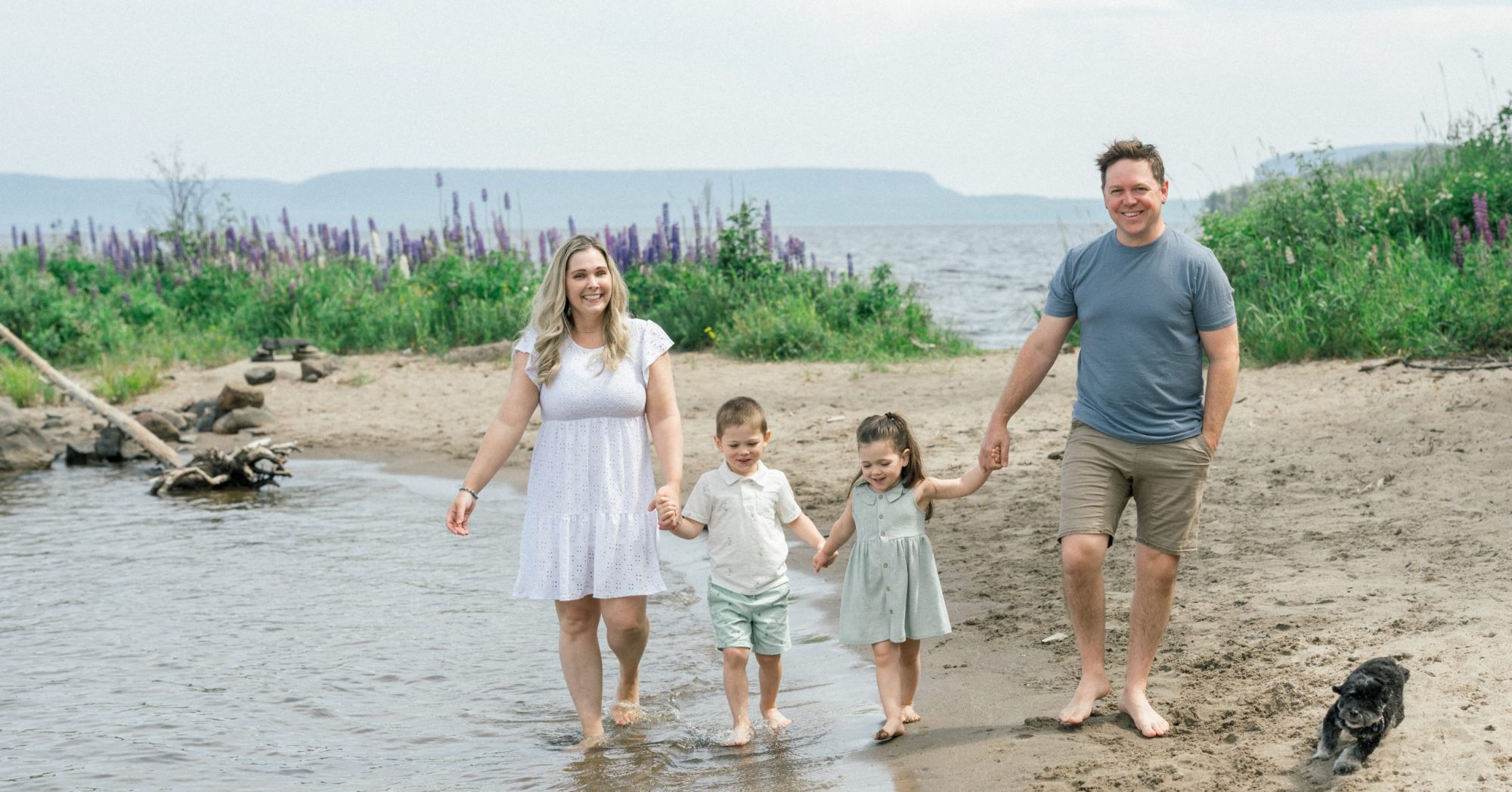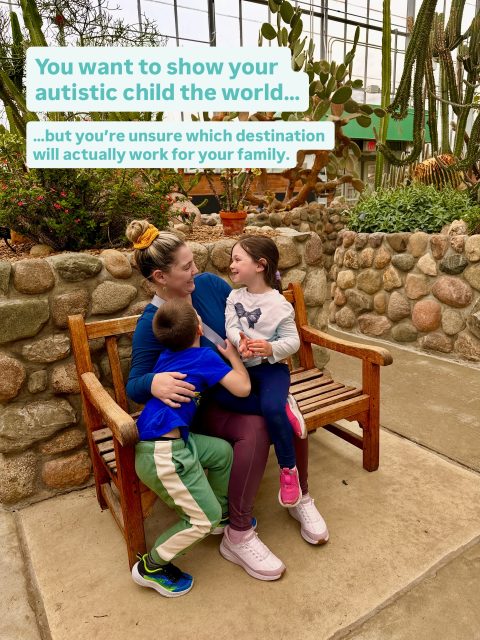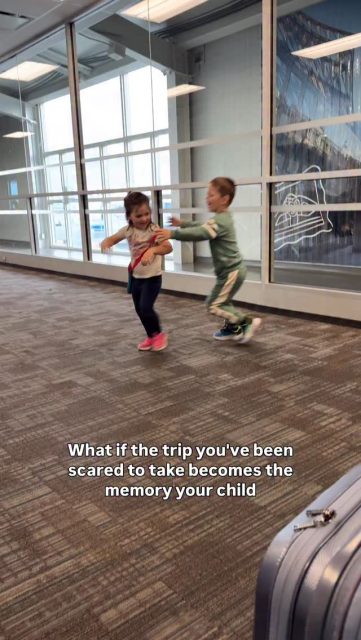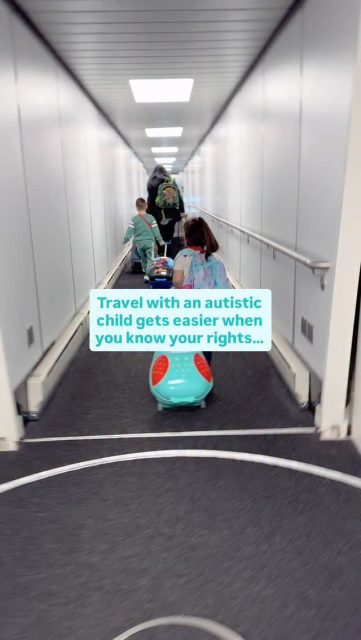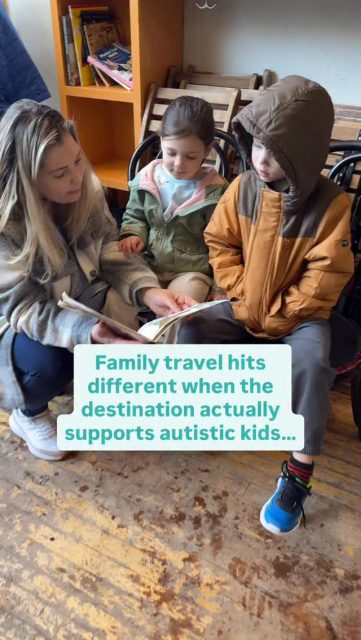Stress Free Travel with Autistic Kids – Quick Takeaways
(Save or Screenshot)
- Use visual schedules and practice transitions at home
- Build a simple sensory kit and plan downtime daily
- Choose suites or quiet rooms and request early check-in
- Keep copies of meds, diagnoses, and emergency contacts handy
- Travel during shoulder seasons and book morning time slots for attractions
- Carry a Medjet membership that brings you back to your own hospital if hospitalized 150+ miles from home
The Truth About Stress When You Travel With an Autistic Child
You might be wondering if it’s even possible to have stress free travel with autistic kids.
Travel can be joyful and overwhelming at the same time. I have watched my kids light up at small moments, a calm garden path, a new train route, a hotel elevator that becomes a “core memory.” I have also had days where the stress felt so high I questioned why we even tried.
With World Tourism Day, I want to share what helps us reduce stress before, during, and after a trip. These are the tools we use, plus the “backup plan” that lets me finally exhale.
*If you are just getting started, you may also like my post on flying with an autistic child and my guide to choosing an autism-friendly hotel.
Autism Family Travel Tips to Reduce Stress
1) Create a Simple Visual Schedule
Walk through the travel day step by step. We preview airport security, boarding, hotel check-in, and sleep routines. Pictures and social stories prepare kids for the unknown and create familiarity.
💡 Supportive resource: Watch my daughter’s short video, where she demonstrates her airplane routine, it’s proof that even young autistic kids can learn to enjoy flights.
2) Practice Small Transitions at Home
Role-play tickets, scanners, and “find our seats.” Short practice makes the real day feel familiar.
3) Build a Sensory Kit That Works for Your Child
Noise-canceling headphones, fidgets, comforting snacks, a lovey/comfort item, and a visual timer live in our carry-on.
4) Travel When Your Child Travels Best
Morning flights or early museum entries help us avoid fatigue and crowds. Shoulder seasons reduce noise and lines.
5) Choose Rooms That Support Regulation
Suites or family rooms with separate sleep spaces help everyone rest. Ask for quiet floors away from elevators and ice machines.
6) Request Early Check-In or a Holding Room
A calm place to land reduces stress after flights. Call the hotel ahead and ask what is possible.
7) Keep Meals Simple and Predictable
Kitchenettes, room service, or nearby spots with kids’ menus help us stay regulated. Pack familiar snacks.
8) Schedule Daily Downtime
Plan one anchor activity, then leave space to reset. Short breaks prevent overload later.
9) Use “First… Then…” Language and Timers
Clear expectations reduce friction. For example, “First elevator ride, then snack,” paired with a visual timer.
10) Set Up Safety Layers
If eloping is a risk, use ID bracelets, AirTags, or photo-fresh outfits. Take a daily photo before you head out.
11) Make a Tiny “Just in Case” Folder
Keep copies of meds, allergy notes, diagnoses, and emergency contacts on your phone and in paper form.
12) Carry a Hospital-to-Home Plan
Preparation is powerful, but it does not remove every “what if.” That is where our membership program comes in.
Our Safety Net for Stress-Free Autism Travel
This part matters the most: this is not travel insurance. It is a private membership program that helps families when the unexpected becomes real.
MedjetAssist
If a member is hospitalized 150 miles or more from home, the program arranges and pays to move you to the hospital of your choice back home. No getting stuck far away. No coordinating complex medical transport alone.
MedjetHorizon
This level adds security and crisis response support for events like political unrest, natural disasters, terrorism, or a missing child. Different need, different solution. That is why families keep Assist and Horizon separate in their planning.
Why we decided to become MedjetAssist Members: there is always a human on the other end. In a hard moment, a calm voice who makes the arrangements is everything.
Unlike insurance that reimburses later, this membership handles the logistics and pays for the transport when you need it. It gives families peace of mind so we can focus on our child.
Our Story, and the Moment It Clicked
On one of our international trips with two toddlers, my daughter got sick, my husband was bedridden, and I found myself alone in a new country with two autistic kids, one who could elope. We had no backup plan if anything took a turn. I started to worry: what if one of us ended up in the hospital, so far from home? How would we even get back?
That trip taught me how fast a situation can change. When I learned about a hospital-to-home membership this year, we joined. Now I know that if a hospital stay ever happens far from home, someone will arrange and pay to bring us back to our chosen hospital. That confidence changes how I travel.
Planning Checklist for Autism Families (Save or Screenshot)
Visual schedule and social stories
Sensory kit and comfort snacks
Suites or quiet rooms, early check-in requested
Morning entries and shoulder-season dates
Daily downtime block on the schedule
Safety layers: ID, trackers, current photo
Copies of meds and emergency contacts
Hospital-to-home membership details handy
FAQ: Autism Family Travel and Medjet
Do autistic kids need special travel insurance?
No, regular travel insurance should cover medical emergencies, but many families find adding a membership program like Medjet gives them more control over getting a sick family member home. Unlike insurance, it pays for hospital-to-home- hospital transport, not just transport to the “nearest adequate facility”.
When does MedjetAssist apply?
When a member is hospitalized 150 miles or more from home. They arrange and pay to move you to the hospital you choose back home.
What about security issues?
That is MedjetHorizon. It adds security and crisis response support for political unrest, natural disasters, terrorism, or a missing child.
Why would a family need this?
Because being stuck in a hospital far from home is hard on kids and caregivers. Having someone to handle the logistics and pay for the transport brings peace of mind, and a proper plan in place.
What’s the best way to prepare autistic kids for flights?
Practice small transitions, use social stories, and watch videos together. My daughter’s airplane routine reel is a great starting point for showing kids what to expect.
*Note: This post reflects our family’s experience and planning. It is not medical or legal advice. Always review membership terms to confirm fit for your needs.
Final Thoughts
Traveling with autistic kids isn’t without its challenges, but it also brings unmatched moments of joy, growth, and connection. With the right preparation and support systems, family travel becomes less about stress and more about creating core memories.
As World Tourism Day reminds us each year, travel should be accessible, safe, and joyful for every family. For us, stress doesn’t disappear, but with tools like visual schedules, sensory-friendly planning, and the peace of mind that comes with Medjet membership, it feels manageable. Knowing that if the unexpected happens, we’ll be brought home safely allows us to keep saying yes to travel.
Because in the end, travel isn’t just about the places you visit. It’s about the confidence to explore, the memories you build, and the belief that your family deserves to experience the world.
👉 Ready to travel with more confidence? Learn more about Medjet memberships here.
Remember, the journey is always worth the destination. ✈️
With gratitude,
Kayla Squier
@dreamjartravels – Inspiring you to turn your travel dreams into reality ✨
